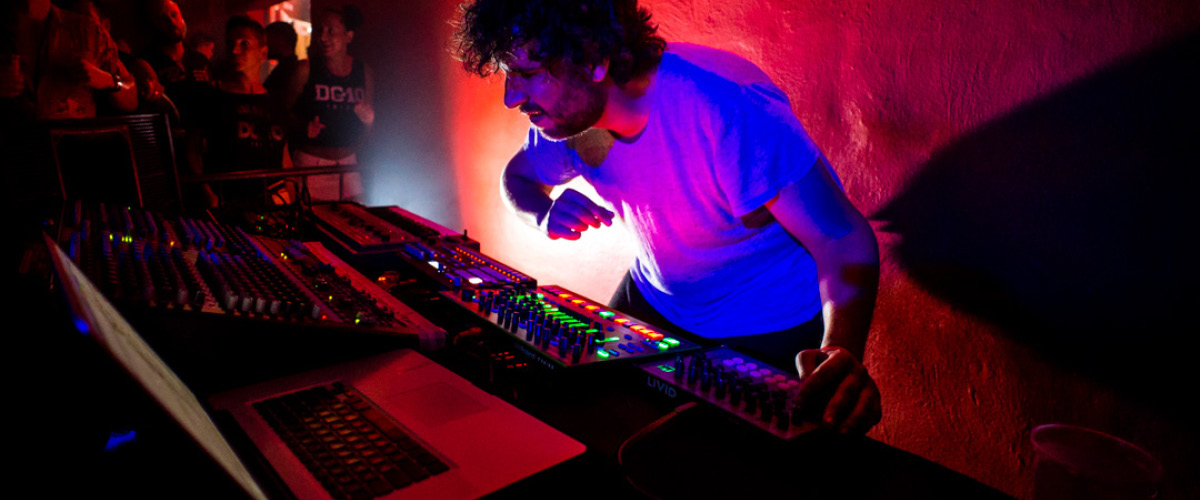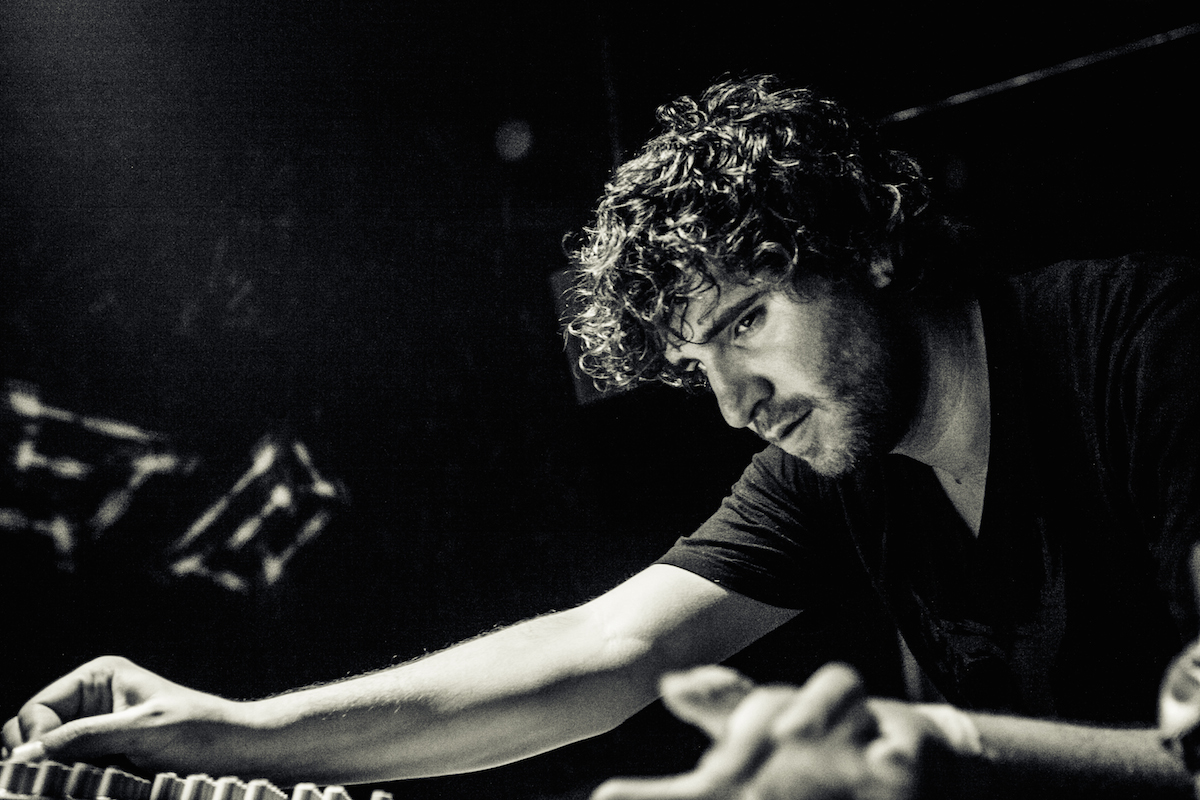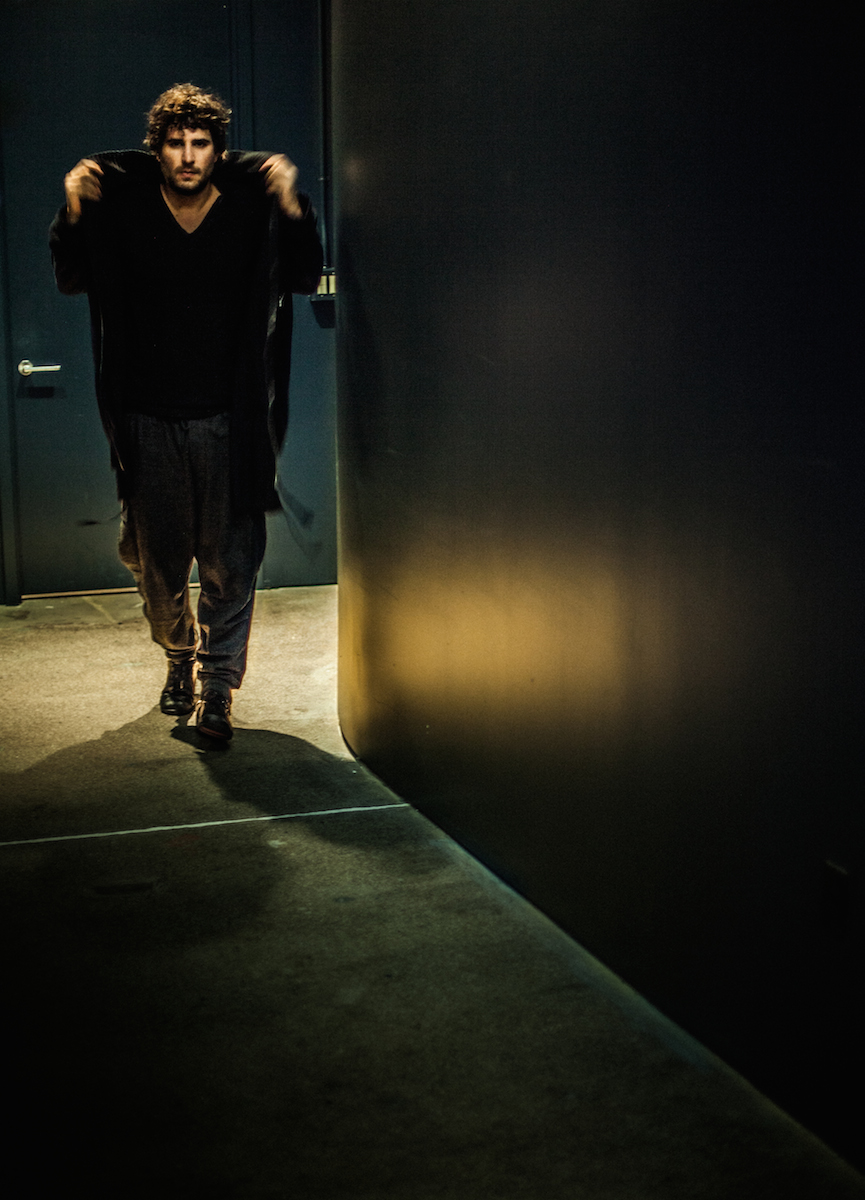Ask the Experts: Mathew Jonson
The Berlin-based Canadian gear fanatic steps up to answer your questions.

Ask the Experts: Mathew Jonson
The Berlin-based Canadian gear fanatic steps up to answer your questions.

Last month, we were delighted to be able to relaunch our Ask the Experts series—a column in which we hand over the reigns to some of our favorite musicians who have agreed to take the time to respond to any and all your questions. First up, we invited Gerd Janson to take on the task; now, it is the turn of Berlin-based Canadian producer Mathew Jonson to be our expert.
To reduce Jonson’s accomplishments into one short blurb is no easy thing. Since the turn of the millennium, he has constantly impressed with a steady flow of emotive, dancefloor-ready releases: it’s an accomplished discography that covers the sci-fi techno of “Learning to Fly”, the clunky minimal of “Alpine Rocket”, and timeless bangers like “Typerope”, as well as so much more. His solo work is one thing, though some of his most revered output has been in collaborative form. Alongside Danuel Tate and Tyger Dhula, he is the third leg inCobblestone Jazz, a trio responsible for some of the catchiest hooks in dance music. Throw Colin de la Plante (a.k.a. The Mole) in the mix, and you’ve got the Modern Deep Left Quartet—a group of friends and musicians who have been active together since their late teens.
The bulk of all these classic productions have been channeled through Jonson’s own imprint, Wagon Repair, a label that has also provided a home for music from the likes of Deadbeat, Minilogue, Mike Shannon, and his brother Nathan (formerly known as Hrdvsion), with whom he forms Midnight Operator. It’s been a hotspot for all manners of quality electronics since the early noughties, and testifies to his ability to select as well as craft some real beauties.
But to what can we attribute to the root of Jonson’s success? As a child, he studied the classical piano, as well as becoming a skilled drummer at the same time. Fast forward a few years to adult life, and that same foundational knowledge was being focussed on his machines. There’s few out there who have such an obvious understanding and close relationship with their gear; catch him performing live, and you’ll see what we mean. With all these skills and qualities in mind, it’s over to Mathew Jonson to respond to his personal favorites from the questions he received from you, our readers.
Do you have any tips for someone who’s really into electronic music and wants to start producing, but has a really low budget and basically no idea on how to start?
I would say start with the free software available to get a feel for things before spending any money. I did a quick search for ‘free music software production sequencing’ and found software instantly that looked pretty good and licence free. Qtractor, Ardour and LMMS are multi-platform (I think), and if you have a Mac, of course, Garage Band is free also. Audacity is a great free wave editor. Get a pair of open-ear studio headphones so you don’t have to worry about the acoustics of the room you’re in, and a cheap MIDI keyboard with some faders on it, and you’re good to go.
If you want to spend some money on software after you have written some tracks with the above free programs, then Ableton is easy to learn. If you have a Mac, Logic is very cheap in comparison to other pro DAW’s since Apple bought it a few years back. If you want to go the hardware route then stick with the Volca Series from Korg, or the Aira (especially TR-8) and Boutique Series from Roland. Both are very affordable, sound amazing and have good user interfaces. They are also small so can fit into any set up live or at home.
Did you get any help when you got started? If yes, what kind of help was this?
In regards to electronic music, I was pretty much self-taught for the first 10 years. When I was old enough to go to clubs, I met lots of like-minded producers and we shared ideas and methods regularly. This is when I met the guys from Modern Deep Left Quartet/Cobblestone Jazz, for example. Aside from electronic music, I had formal training in classical piano and percussion too.
Have you ever had doubts that your music isn’t “good” enough? If yes, what did you do? Did you ever think about making more popular/commercial sounding music, and what made you stick to your own in the end?
I battle with that all the time. Last weekend I went in the studio and made something I thought sounded great. I went back in the next day and hated it. That’s just being a musician: it’s a constant fight with yourself to stay focused and finish what you started in the same sitting before your mood changes and things are no longer in context.
In terms of making music that is more pop or something: if I don’t write what I feel, then the music sounds contrived and it’s pretty terrible. So, best for me to just stick with what feels right in the moment and trust myself.

As you have your studio stuffed with loads of gear, I was wondering how high you drive your synths when recording? Of course, you are using a mixing desk, but how much headroom do you leave for a synth recording? Do you have an opinion on which is the best level for the input when simply using Ableton to record the hardware? Also, how do you make sure you have them sounding as good as possible?
I actually don’t do much multi-tracking as with latency and digitising things, it’s easy to lose the feel of the parts. If I do, I try and get the hottest level possible without clipping, so that the bit-rate is as high as it can be. I also pay close attention to my analog signal path to make sure the levels are around unity at all stages, to reduce line noise. If that’s working with a vocalist, for example, I would definitely run through the Manley Vari MU to smooth out the peaks and add some harmonic content. In compression mode, I tend to drive the input pretty hard as I like the color and shape the Manley adds, though that is very specific to that unit. Sometimes I will also record a vocal at lower volumes dry in addition, in case I want to apply some parallel compression afterwards etc. With synths I don’t compress when tracking at all as I like to have the dynamics to work with on playback through the desk.
It’s important to note that all my mixes are summed on the desk with as much coming directly from the machines as possible. I do a lot of improvisation on the fly and this adds a live and raw feeling to the music. If I multi-tracked the parts, I would lose the control to change the perimeters on the synths live in the mix.
“I can be a bit of a cowboy at times on the mixing desk. Sometimes my mixes clip and I have to do the whole thing over. Not such a pro in the end, I guess!”
Do you have any preamp recommendation for specific synth use?
I use an FMR—a very nice compressor for the Rhodes and it sounds great. But I don’t use preamps other than what is on my desk for the synths. APB Desks have nice pre’s built in so….
How much headroom do you leave when exporting a mix-down? -3/-6/-12db? Nothing at all?
I try and shoot for around -6, but sometimes it gets hotter by accident due to me mixing and dubbing live when I record down to stereo. I can be a bit of a cowboy at times on the mixing desk. Sometimes my mixes clip and I have to do the whole thing over. Not such a pro in the end, I guess!
My questions are all about what I assume is new music of yours, particularly the vocal you’ve been playing that sounds like “Check it, it’s the girl on the rekid” repeating over and over, drenched in all the right effects. You dropped an extended version at your performance at TV Lounge during Movement 2015, and also it can be found in the Bogota Boiler Room around 12 minutes. What is this? Are you considering releasing it? I also have to ask about the “Get Money” tune and the “World Keeps Spinning Round?” Some of the newer stuff is somehow already so tried and true.
The first vocal is me through an Eventide Diatonic Harmoniser effect. I do this a lot in my tracks. Other examples would be my vocals in “Put your Booty Shorts On” or “Touch the Sky.” It’s just a loop I made for my live show—it’s actually not attached to any track as of yet; I use it with a few different pieces.
I think the “Get Money” sample that you’re talking about is from a hip hop track. It’s actually the only sample in my live set that is not my voice. ‘The World Keeps Spinning Around’ is me singing—it’s the first time I didn’t heavily effect my voice. I wish I could pull off vocals more often, but I really need lessons to be that consistent!
“Most of the time the music I am writing just appears in my head. Reading or looking at art is probably the best way to stimulate this thing that happens. It certainly feels a bit profound, as I don’t really know where the music is coming from. It’s just there.”
I also wanted to ask how often do all of the Modern Deep Left Quartet members get a chance to get together and just jam? It seems like an endless source of inspiration that just doesn’t seem to happen often enough.
We always take time in my studio when we are on tour in Europe. That’s about it though, so only a few times a year. We do lots of jamming, but we also like writing specific parts for tracks and then doing live mixes with proper beginnings and endings.
Which singers would you like to work with in the future and why?
My favorite vocalist at the moment is Amel Larrieux—in particular her album from 2006 entitled Morning.

Your music is other-wordly. “Dayz” is my favorite track of yours. When composing and you have your initial idea/feeling written down, how do you begin to expand on it? This is not a question of finishing tracks, but expanding ideas.
“Dayz” started with the bassline. I found a chord progression I liked and then listened to it for some time, before writing the bassline around it. I let it loop for a while, then the melody popped into my head so I played it into the sequencer and it worked well. Sometimes I write by working out a nice scale or chord progression, but most of the time the music I am writing just appears in my head. Reading or looking at art is probably the best way to stimulate this thing that happens. It certainly feels a bit profound, as I don’t really know where the music is coming from. It’s just there.
If you have to make a one-hour live show, and you can choose just one drum machine, one bass synth and one other synth or effect, what setup would you choose and why?
Roland TR-8, Roland SH-101, and JX-3P (with its programmer) hands down. It’s mainly those three because of the way they sound together, the step-sequencers and ability to write on the fly. In fact most of my music has been made with this combination (of course with original 909 and 808 before the 8 was released). It’s kind of funny that the cheapest synths and drum machines in my studio are the best combination together.
It fascinates me how artists all have their own sound. How long did it take you to develop your own sound and style? Did it happen naturally or were you very conscious of it?
I just write what comes into my head, so I would have to say it’s just how I sound in terms of the music. When it comes to the gear, then that sound is because of the analog synths that Roland developed in the ’80s—namely the 101, JX-3P, MC-202, and of course the classic drum machines. I think it also has a lot to do with the Ensoniq DP/4+ and Korg A1 effects algorithms.
Do you have a favorite classical music composer?
Tchaikovsky and Rachmaninoff would be my favorites. Rachmaninoff’s “Op. 3 No. 2 In C Sharp Minor” and Rachmaninov’s “Musical Moment No.4 in E minor” are examples of the stuff I tend to listen to. As a pianist though, my favorite is Keith Jarrett, who of course stems more from jazz.
You have a really extensive live setup—how does it all work and connect? Do you use Ableton or a DAW as the main hub or sequencer? Or something different all together?
The main hub is the desk; I use a Midas Venus V240. All the sounds are separated into their own channels. There are seven inputs for drum machines (TR-8 and Analog Rythm), one input for the SH-101, six inputs from the computer comprising of a stereo pair for each of basslines, melodies and harmonies/accoustic percussion. Then there are seven channel inputs for effects returns (better on the channels than on the actual returns, as you get EQs).
The FX are constantly changing, but at the moment I am using a TC Hall of Fame Reverb, Roland Demora Delay, Roland Scooper, and Roland Bitrazer—these are on the FX sends and AUX sends from the Midas. Sometimes I also bring some Eventide pedals like the Modfactor, Pitchfactor and Space. All the instruments are left in write mode, with no patterns programmed on them. This is the live part of the show, so I spend most of my time writing drum and synth lines on the SH-101. From the computer I have separated samples of tracks that I play in various ways. The Macbook running Ableton is the master clock and the other devices all slave. The 101 sequencer is run from the Rimshot of the TR-8 via the Roland SBX-1.
“Marionette” is my favorite track. What was the inspiration behind it? Did you just know instantly that this was something special?
I made “Marionette (the original) – Crosstown Rebels” first (back in 2003), but didn’t think it had enough going on in it. So, I then re-made it into what came out on Wagon Repair in 2005. After many years, I decided I actually like the original track better, so put it on my second album. I knew it was special, yes. So of course, this is why I attempted to remake the idea into something better. It’s kind of funny how sometimes you think a track needs more parts, but in reality it is fine the way it is.
______________________________
Photos of Mathew Jonson by David Terranova.
Header photo: from Paradise Ibiza last month by Tasya Menaker

